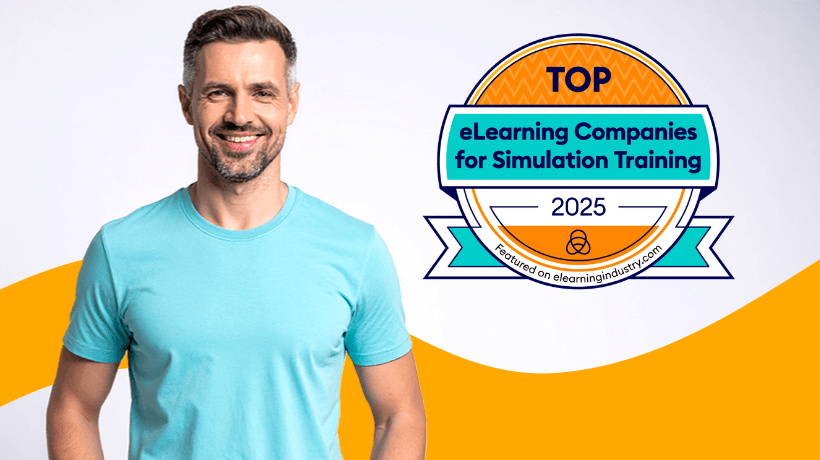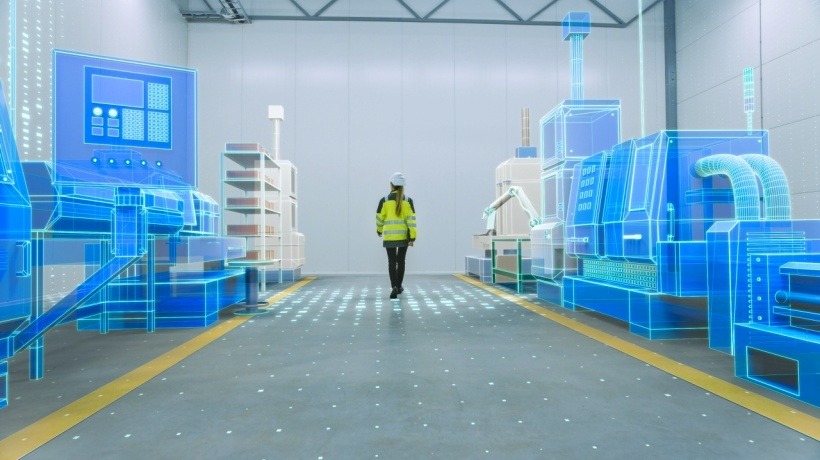Closing Skills Gaps With Simulation Training
In today's fast-paced, skills-driven economy, employers across industries from manufacturing and healthcare to tech and finance are grappling with a persistent problem: the skills gap. Despite vast investments in employee training and education, many organizations continue to report that workers lack the real-world skills needed to meet job demands. As a result, Learning and Development (L&D) leaders are asking a critical question: Can simulation training close the skills gap faster and more effectively than traditional learning methods?
The short answer is: yes. But to understand why, we need to unpack what simulation training is, how it differs from conventional learning models, and how it accelerates both skill acquisition and job readiness.
Understanding The Skills Gap
The skills gap refers to the disconnect between the skills employers need and the capabilities employees possess. This gap can be caused by various factors, including rapid technological advancements, inadequate education-to-employment transitions, outdated training methods, and the inability to retain or reskill workers fast enough. This gap is costly in terms of lost productivity and operational inefficiencies, and the missed opportunities for innovation and growth.
Traditional learning, while useful for foundational knowledge, often struggles to keep pace with real-world complexities. Learners may understand the theory but still lack confidence or experience when it's time to apply it. That's where simulation training steps in as a game-changer.
What Is Simulation Training?
Simulation training is a technique that uses realistic, interactive environments to replicate job-related tasks, decisions, and scenarios. It enables learners to "learn by doing" in a safe, controlled, and feedback-rich setting.
Simulations may be powered by specifics like:
- Scenario-based learning modules.
- AI and adaptive learning engines.
- Virtual Reality (VR) and Augmented Reality (AR).
- Gamification and branching narratives.
- Real-time feedback and analytics.
Unlike passive learning formats like slide decks or lecture videos, simulations are experiential, dynamic, and performance-driven. Learners are placed in the role of decision-makers, tasked with navigating challenges, applying knowledge, and learning from their choices, just as they would on the job.
How Simulation Training Closes The Skills Gap Faster
Let's explore the key ways simulation training helps bridge the skills gap more effectively and rapidly than traditional methods:
1. Real-World Application, Not Just Theory
One of the major limitations of traditional learning is the delay between learning and application. Learners may grasp concepts during training, but they often struggle to apply them when faced with real-world complexity.
Simulations close this gap by placing learners directly into context-rich scenarios. For example, a customer success manager might be tasked with handling a dissatisfied client, while a healthcare worker may need to diagnose a patient in a high-pressure situation. In both cases, simulations mimic the environment, the constraints, and the emotional dynamics of real work.
The result? Learners gain practical, job-ready skills faster because they're learning in context, not in abstraction.
2. Faster Feedback, Faster Mastery
Traditional learning often provides delayed or limited feedback through quizzes, assignments, or performance reviews. In contrast, simulation training provides immediate, targeted feedback based on the learner's decisions and actions.
This instant feedback loop helps learners:
- Recognize mistakes as they occur.
- Reflect on decision-making processes.
- Correct behavior in real time.
- Internalize lessons more deeply.
When learners get the opportunity to repeat tasks and refine strategies based on real-time insights, their path to proficiency and confidence becomes significantly shorter.
3. Safe Space To Fail And Improve
Failure is a powerful teacher, but in real job settings, failure can come at a high cost. One of the biggest advantages of simulation training is that it provides a risk-free environment for learners to make decisions, take action, and see the outcomes without impacting real customers, patients, or business operations.
Whether it's a pilot rehearsing an emergency landing, a manager navigating a conflict, or a technician troubleshooting a system error, learners can fail safely, reflect, and improve. This reduces fear and builds resilience, critical components of long-term skill development.
4. Adaptive Learning Based On Skill Level
Not every learner starts at the same point. Traditional learning typically follows a fixed path, assuming all learners need the same information and progress at the same pace. This approach can result in boredom for some and overwhelm for others.
Simulation-based platforms, especially those powered by AI and adaptive learning technologies, can adjust in real time based on:
- Learner responses.
- Skill proficiency.
- Confidence levels.
- Behavioral patterns.
This ensures that each learner gets personalized challenges, neither too easy nor too difficult, accelerating growth while maintaining engagement.
5. Accelerated Onboarding And Role Readiness
Time-to-productivity is a key metric for new hires. The sooner an employee can perform effectively, the greater the ROI on training. Simulation training significantly reduces onboarding time by immersing employees in role-specific scenarios from day one.
Instead of spending weeks learning processes passively, new hires can interact with simulated systems, customers, or decision frameworks. For example:
- Sales teams can practice handling objections and closing deals.
- Engineers can navigate troubleshooting systems under pressure.
- HR professionals can rehearse difficult conversations or policy enforcement.
This leads to quicker readiness, reduced training time, and greater confidence early in the job cycle.
6. Measurable Outcomes And Skill Analytics
Traditional learning often lacks precision in tracking what learners have truly mastered. Simulation platforms, on the other hand, offer deep performance analytics that go beyond quiz scores.
They can track:
- Decision-making patterns.
- Time taken to respond.
- Emotional tone and communication style (via AI/NLP).
- Frequency of correct vs. incorrect responses.
- Progress over repeated attempts.
This data enables L&D leaders to diagnose skills gaps, spot high-potential employees, and tailor interventions with precision. It also allows organizations to link learning outcomes to Key Performance Indicators, creating a more accountable and strategic training function.
Real-World Examples Of Simulation Training In Action
Simulation learning solutions are being applied globally across industries:
- Walmart used VR-based simulations to train employees for Black Friday, improving response time and customer service during high-stress events.
- Airlines have long relied on flight simulators to train pilots, ensuring safety and accuracy without endangering lives.
- Healthcare providers use patient care simulations to train nurses and doctors on everything from diagnostics to emergency response.
- Tech companies are deploying customer service and cybersecurity simulations to prepare teams for unpredictable, real-world scenarios.
These examples demonstrate the scalability, adaptability, and real impact of simulation training.
Is Simulation Training A Complete Replacement For Traditional Learning?
Not entirely. Foundational knowledge, terminology, compliance rules, technical theories, etc., still benefit from traditional formats like eLearning modules, reading material, and Instructor-Led Training. However, simulation training is the fastest, most effective bridge between knowing and doing. It should be integrated into learning ecosystems as the application layer, where knowledge is tested, practiced, and mastered. Think of it like this: traditional learning teaches you what to do. Simulations teach you how and when to do it, and what happens if you don't.
Conclusion: A Smarter Way To Close The Skills Gap
The skills gap is a performance problem, and solving it requires methods that are faster, smarter, and more attuned to the demands of real work. Simulation training accelerates skill development by providing immersive, adaptive, and performance-oriented experiences. It equips learners with practical judgment, critical thinking, and confidence, often faster than traditional methods ever could.
In a world where agility and readiness are non-negotiable, simulation-based learning isn't just a supplement; it's a strategic imperative. For organizations looking to future-proof their workforce and deliver measurable training ROI, the question isn't whether simulation training works. The real question is: Can you afford not to use it?








